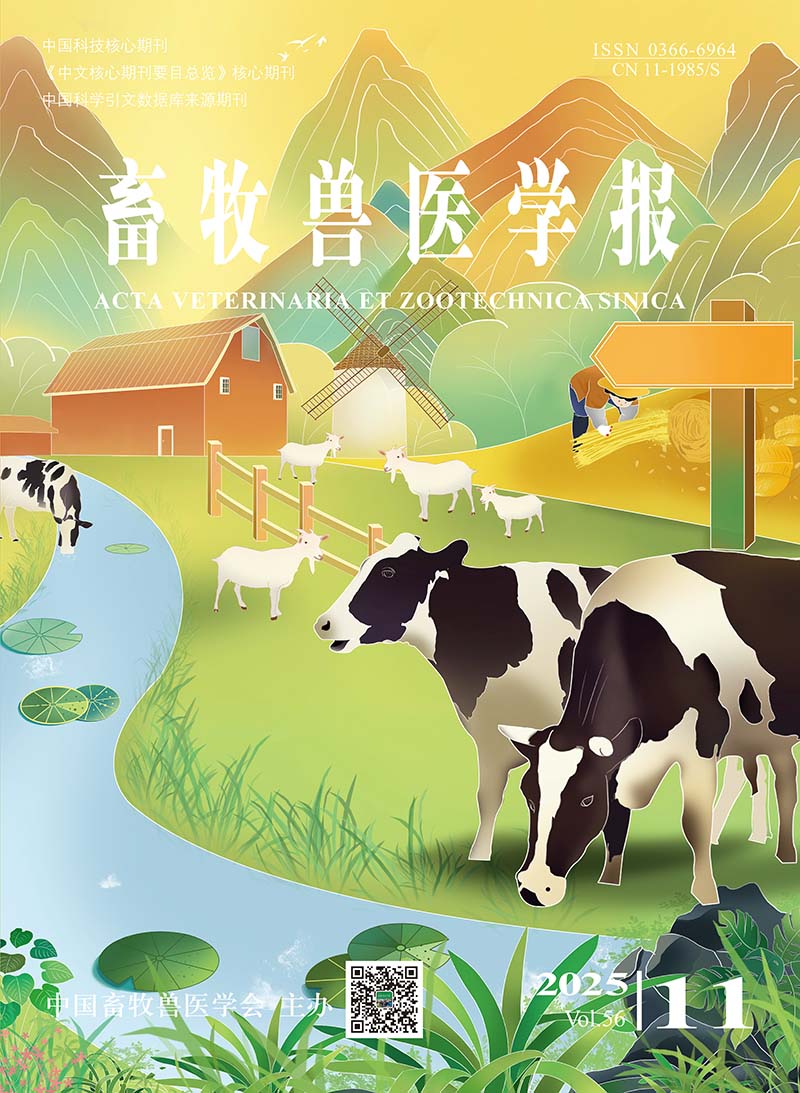-
Effect of SMAD1 Gene on Ovarian Granulosa Cells and Its Tissue Expression Analysis in Qianbei Ma Goats
- AO Ye, CHEN Xiang, ZHOU Zhinan, ZHANG Yan, HONG Lei, WEI Shinan, WU Yu, TANG Wen
-
2020, 51(7):
1607-1618.
doi:10.11843/j.issn.0366-6964.2020.07.013
-
 Abstract
(
269 )
Abstract
(
269 )
 HTML( )
HTML( )
 PDF (3440KB)
(
325
)
PDF (3440KB)
(
325
)
-
References |
Related Articles |
Metrics
The purpose of this study was to verify the results of SMAD1 gene up-regulation comparing single lamb group to multiple lambs group in transcriptome sequencing, and to explore the effect of SMAD1 gene on lambing traits of Qianbei Ma goats. In this experiment, healthy, 4-year-old single, multi-lamb Qianbei Ma goats ewes with 45 kg were selected as the research objects. qRT-PCR method was used to detect the expression of SMAD1 gene in uterus, fallopian tubes, pituitary, hypothalamus and ovarian tissues of Qianbei Ma goats ewes in the single and multi-lamb groups. CDS region of SMAD1 gene of Qianbei Ma goats was amplified, recombinant plasmid pEGFP-N3-SAMD1 was constructed and was transfected into ovarian granulosa cells by liposome transfection method. The SMAD1 overexpression test group and pEGFP-N3 empty vector control group were set up. By detecting the concentration of estradiol and progesterone in the culture medium, the effect of overexpressing SMAD1 gene on the proliferation and apoptosis of ovarian granulosa cells was detected by CCK-8 and Annexin V-FITC methods. qRT-PCR was used to detect the effect of overexpressing SMAD1 gene on the mRNA expressions of SAMD1, GnRHR, FSHR, BMP4 and TIMP3 genes to explore the influence of SMAD1 gene on ovarian granulosa cells. The results showed that SMAD1 gene was expressed in various tissues of Qianbei Ma goats. Comparison between the groups showed that the expression of SMAD1 gene in ovary and hypothalamus tissues were extremely significantly higher in the single lamb group than those in the multiple lambs group (P<0.01), in the fallopian tube tissues, it was significantly higher in the single lamb group than that in the multiple lambs group (P<0.05), and there were no significant difference in other tissues between the groups(P>0.05). The CDS sequence of SMAD1 gene was successfully cloned, no mutation site was found. The recombinant plasmid pEGFP-N3-SAMD1 was transfected into ovarian granulosa cells. The E2 content in the culture medium in transfection test group was significantly higher than that in the control group at 12 and 48 h (P<0.05), the content of P4 in transfection test group was significantly higher than that in the control group at 12 h (P<0.05); Overexpressing SMAD1 gene significantly promoted cell proli-feration at 24 h (P<0.05), and extremely significantly promoted cell proliferation at 48 and 72 h (P<0.01). It was found that overexpression of SMAD1 gene inhibited the apoptosis of ovarian granulosa cells, which was consistent with the result of SMAD1 gene promoting the proliferation of ovarian granulosa cells. However, the mRNA expressions of GnRHR, FSHR, BMP4, and TIMP3 were extremely significantly decreased after overexpressing SMAD1 gene(P<0.01). In summary, the overexpression of SMAD1 gene can increase the production of E2 and P4, help to maintain the estrus and pregnancy of Qianbei Ma goats, promote cell proliferation, inhibit cell apoptosis, and also significantly inhibit the expression of reproduction-related genes mRNA, and these reproduction-related genes can regulate the number, development and formation of follicles and ovulation. Therefore, the SMAD1 gene can suppress the expressions of reproduction-related genes, which results in a low conception rate in the single lamb group of Qianbei Ma goats, and further reduces the number of lambs. The result of this study provide a theoretical basis for studying the lambing traits related genes, and SMAD1 gene can be used as a candidate gene to explore goat lambing traits.






